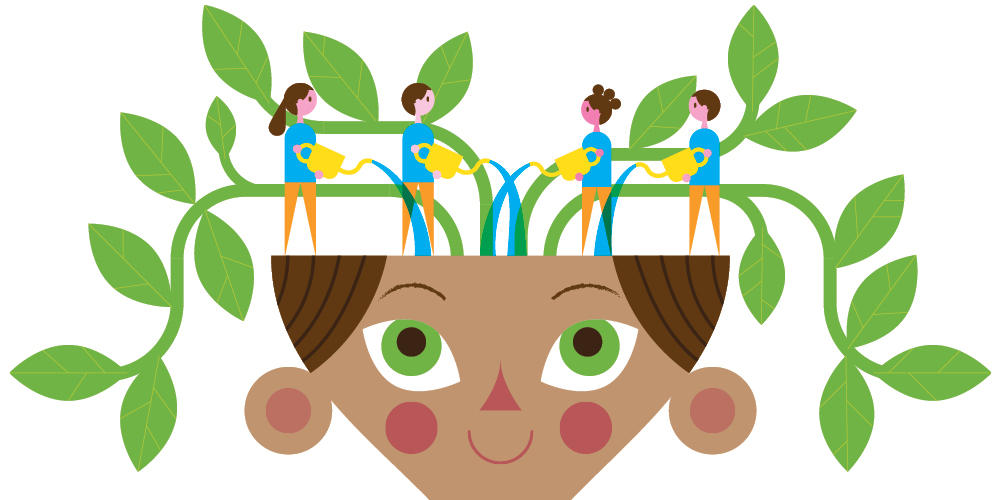Why your customers should be central to your innovation efforts
Ditching the “science fair” mentality toward innovation will help transform ideas into commercial reality.
A version of this article appeared in the Winter 2019 issue of strategy+business.
There’s a big mistake that a lot of companies make. It’s one that until a few years ago was common in my own organization, and it stems from a worthy goal: to boost innovation. The mistake is adopting what I call the “science fair” mentality: encouraging employees throughout the organization to innovate freely but without much, if any, direct contact with the very customers these innovations are intended for.
Unconstrained innovation sounds exciting, like the sort of thing startups do. But the truth is that successful startups actually don’t do that, because they know that innovation without a framework rarely leads to business success. It does lead to inventions that are impressive and creative, but they ultimately prove impractical or irrelevant for driving business growth.
How, then, can you get employees to innovate products and services that actually improve the performance of your business? The answer is by creating a structure that involves your customers, from an early stage, in your innovation efforts.
Focusing on the customer (for real)
It’s a rare company these days that doesn’t claim to put its customers first. It’s also a rare company that doesn’t do market research. But what is exceptional is a company with a framework to channel innovative energies so that they solve customer pain points and result in a commercial outcome the market will pay for.
Getting employees to innovate products and services that improve the performance of your business requires a structure that involves customers, from an early stage, in your innovation efforts.
Building this framework does not mean stifling creative energies under a heavy layer of bureaucracy. Rather, it means making sure that the innovation responds to customer needs and has the flexibility to evolve as you better understand those needs.
For instance, one of the projects I lead at PwC, the Global Innovation Challenge, could be a model for your organization. Invite employees from around your network, from all disciplines, to submit early-stage, technology-enabled business solutions. But require that before a team can enter the contest, it must include examples of marketplace interest — not just an explanation of how (and how soon) the project will meet specific client needs, but also feedback from potential or actual clients on a prototype or pilot.
Internal incubators are also ways you can create ongoing feedback loops with the marketplace. Multiple customer and third-party interviews and growing signs of market interest are required for a project to receive and keep funding from these groups. As you assess the customers’ feedback, the teams make changes in line with the customers’ needs — and if the market response isn’t promising, you pull the plug.
Four steps to make customers your innovation partners
No part of this process is improvised: Criteria and milestones are critical, including a framework that ensures that the customers are guiding the innovation. To take just one example, before PwC New Ventures, an internal software-as-a-service incubator, releases the first round of funding for a project, it needs to see at least 20 interviews with customers. Indeed, many projects have more than 100 interviews over the development period.
Here are some ideas to get that innovation-guiding framework started:
1. Get specific. It’s not enough to say “talk to customers” or “research the market.” Establish specific criteria for the quantity and quality of customer interviews.
2. Set milestones. Even after you’ve made the decision to invest in an innovative project, continue to check not just technical progress, but also customer feedback, on a regular basis.
3. Offer expert guidance. Brilliant technical minds aren’t always brilliant at interacting with customers. Assign a person or team to train technical people on customer outreach, and to do the outreach directly when needed.
4. Set procedures to react. Ensure that the team has the time and the processes to reflect on market feedback and adjust the design appropriately. Be ready, if the feedback is poor, to terminate the project and reallocate resources.
What happens when you listen
A team at PwC recently developed a new tool for franchise owners designed to quickly, easily, and digitally market their stores. The team planned to make this digital platform the core feature of a new product.
Following our framework — and our core principle of customer-driven innovation — PwC team members reached out to customers. Listening to the franchise owners, the team learned that one of their top priorities was to support their customers, the franchisees. So the team members went back to work, adding components that the owners could use to help franchisees reach their end-users. The resulting product that was introduced to the marketplace attempted to solve problems for our clients while enabling them to solve problems for their clients.
The result of listening with empathy and emotional intelligence is that you will be able to not just mostly fulfill a customer’s needs but truly fulfill them, which usually makes the difference in whether that customer ultimately buys your product or not.
Another big benefit of really listening is stronger customer relationships. After frequent interactions with your design teams to ensure that the final product will meet your customers’ needs, these customers start to view your people as partners and friends. And frequently, customers discover needs — which your new product or service can meet — that they didn’t even know they had.
If your innovation efforts are to truly add value to your business, customer-centricity will have to be more than a motto. It will have to be a framework to turn your customers into your innovation partners. The insights they bring will make all the difference in ensuring that the product not only solves their problems, but also provides an exceptional experience they’ll keep coming back for.



